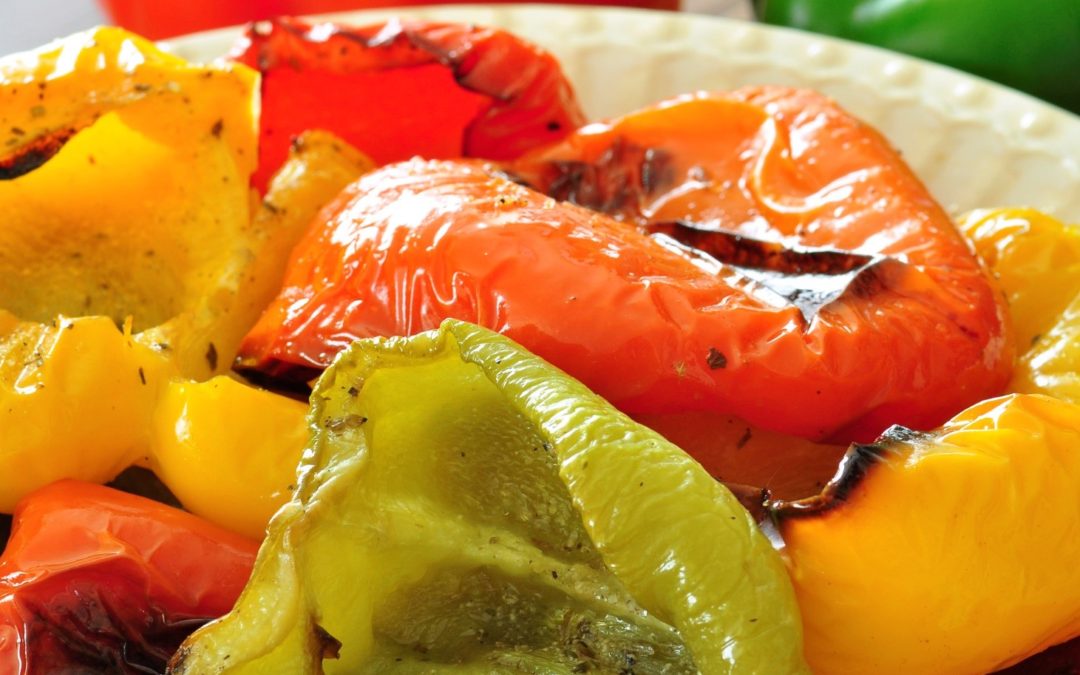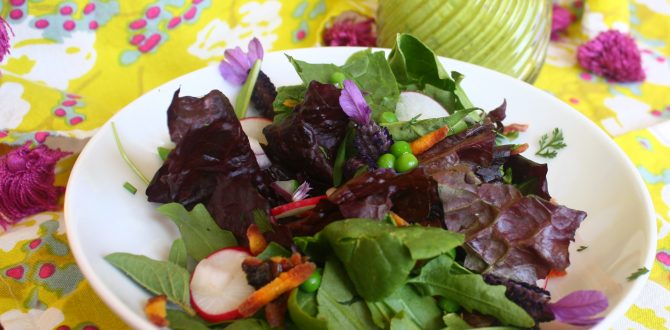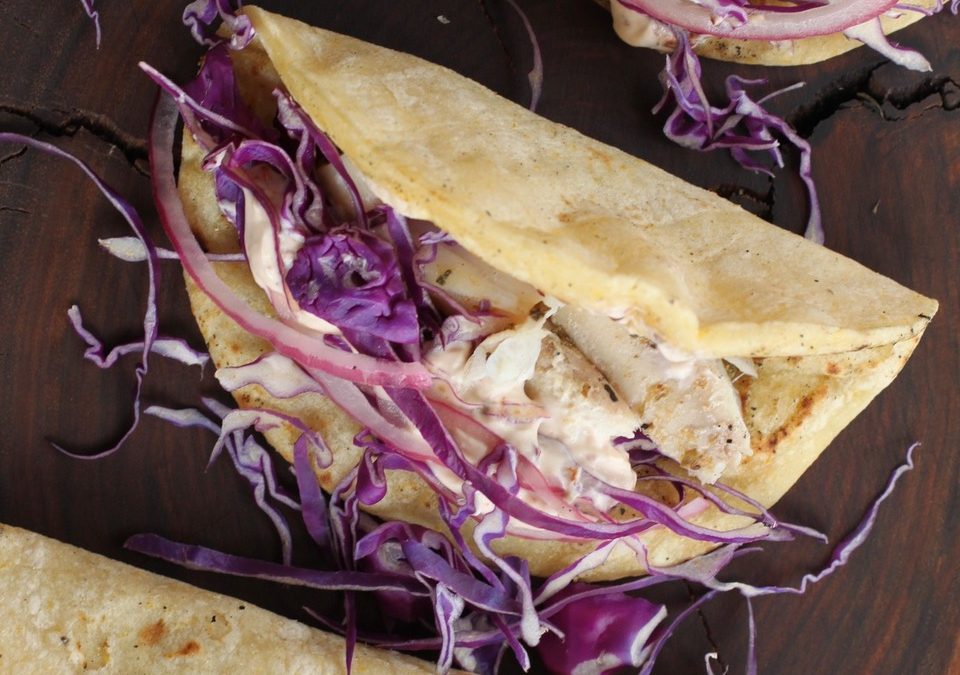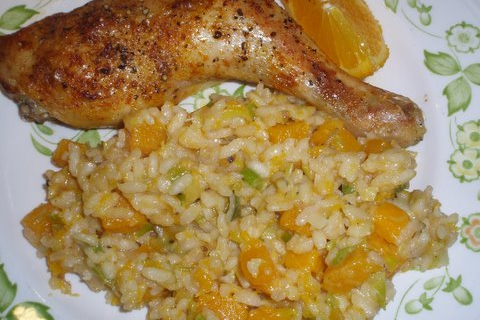
by Guest | Aug 23, 2019 | Eat Well, Recipes
Recipe & Photo Source: FoodHero.org
Number of servings: 4
Time for preparation (including preparation and cooking): 35 minutes
Ingredients:
4 bell peppers
2 teaspoons vegetable oil
1⁄2 teaspoon Italian seasoning
1⁄2 teaspoon garlic powder
1⁄4 teaspoon each salt and pepper
Directions:
- Preheat oven to 450 degrees.
- Wash bell peppers and remove tops and seeds. Cut peppers in half and rub with vegetable oil. Place cut side up on a rimmed baking sheet and sprinkle with Italian seasoning, garlic powder, salt and pepper.
- Roast until peppers are tender and blistered in spots, about 30 to 35 minutes.
- Refrigerate leftovers within 2 hours.

by Michelle | Aug 23, 2019 | Being Well, Eat Well, Recipes

Pam Russell earlier in her journey
Pam Russell’s health journey, like so many others’, has had its ups and downs. Along with recovering from cancer and dealing with other life stresses, Pam has often been frustrated with her weight. As so commonly happens, it seemed there were always issues that got in the way of making lasting health behavior changes. She tried different “quick-fix” approaches, including a liquid diet, but she knew she was not on the right path. “For one thing, I wasn’t learning anything about making healthier choices,” she said, “Plus, I was spending all this money and not seeing the results I wanted. I knew I needed to change my approach but I didn’t know where to start.” Pam admits she was hoping to find a “magic pill” but she was also open to making a long-term commitment to change.
Pam learned that her risk for cancer reoccurrence would be reduced with healthier eating habits and better weight management. Highly motivated after going through cancer recovery, she asked her primary care provider for advice on how to improve her eating habits. Based on the success of other patients and knowing Pam was searching for a convenient solution, her care provider suggested she consider Weight Watchers.
After looking into the program, there were several elements that appealed to Pam. “I’ve learned so much!” she emphasized. “Choosing foods that are right for my goals and tracking what I eat has helped me eat differently.” Pam likes the app that is part of the program and how the points-based system helps with her decision-making throughout the day. What really works for her is that she is changing the way she eats, while also enjoying a better quality of life and sense of well-being.
Pam describes her own “aha” moment as she was learning about food choices. When she realized that fruits and vegetables are nutrient powerhouses that promote health and healing, she found they were much easier to choose and work into her day. She went on to say that what she has learned has totally changed her relationship with food and with eating. After trying many other “quick fixes” and spending a lot of money, she now firmly believes in the power of relatively simple food choices that can make such a big difference. Since, starting this journey, Pam has lost weight, reduced her cholesterol levels and she feels great.
Initially, Pam focused solely on changing her eating habits. Now that she has established a sense of routine around her eating habits, she has added exercise back into her daily life. She says, “adding exercise helped me bust through some of my weight-management plateaus and it also keeps me motivated.” She enjoys participating in group fitness classes at the Y and the sense of community and support they provide.
After the interview, Pam shared an observation of why she believes she and so many others come to the Y. “We go there to heal,” she said. “At least, I know that’s what it has done for me and I think that’s why a lot of other people are there too.”
There are many supports available to people seeking to improve their eating habits, including on-site nutrition services at Tillamook County Community Health Centers, Adventist Health & Rinehart Clinic as well as community programs like CHIP, Cooking Matters, Diabetes UnDone and Diabetes Prevention Program classes offered at the YMCA. Be sure to check with your primary care provider to see what options are available to you and if they are covered by insurance. For more information about local health and wellness programs, visit tillamookcountyhealthmatters.org or follow Tillamook County Wellness on Facebook, Twitter and Instagram.

by Guest | Aug 10, 2019 | Eat Well, Recipes
Recipe & Photo Source: American Diabetes Association Diabetes Food Hub
Prep Time: 10 min
Cook Time: 17 min
Servings: 6
Serving Size: 1 Cup
Ingredients
1 tablespoon canola oil
2 pounds chicken tenderloins
¼ cup light Italian salad dressing
3 Tablespoons balsamic vinegar
Salt and pepper to taste (optional)
1 teaspoon honey
1 teaspoon crushed red pepper flakes
1 pound asparagus (ends trimmed)
½ cup shredded carrots
1 cup cherry tomatoes (halved)
Directions
- Preheat skillet over medium-high heat.
- Add the oil and swirl to coat the pan, then add the tenderloins to the skillet in a single layer. Lightly season the chicken with salt and pepper, if using. Cover and cook for 7 minutes.
- While the tenderloins are cooking, make the balsamic dressing: Combine the Italian dressing, honey, balsamic vinegar and crushed red pepper flakes in a bowl. Whisk until combined.
- Turn chicken tenderloins and add half of the balsamic dressing to the skillet. Cover and cook for 3 minutes.
- Remove chicken tenderloins from the skillet. Add carrots, asparagus and cherry tomatoes. Cover and cook for 5 minutes, or until the vegetables are done to your preference.
- Add chicken back into the skillet along with the remaining balsamic dressing. Cover and warm through, approximately 2 minutes.

by Guest | Jul 4, 2019 | Eat Well, Recipes
Article provided courtesy of the Tillamook County Pioneer, a Tillamook County Wellness partner.
By Dana Zia, The Golightly Gourmet
“For me, making a salad is as much a joy as eating one.” -Alice Waters
This is the time of year I crave salads. I can’t get enough of the fresh yummy flavors after a winter of braising and heavy dishes. Some folks find that making a really great salad can be intimidating but honestly it is quite easy. There are a few simple tips to making successful salads. Try to use as many “in season” and local veggies as possible. The fresher the veggies and greens, the better it tastes. (Remember those tasteless iceberg salads from days of old?) Sprinkle a few toasted nuts, chopped herbs and some goat cheese on your salad and you will make any salad special. Edible flowers also add a lovely extra dimension.
I also highly recommend you make your own salad dressings. I keep about 3 different homemade salad dressings in the fridge at all times. Homemade dressings bring a bowl of ordinary greens to life. They are incomparable in flavor and are not loaded with preservatives you can’t pronounce.
When you get in a rut, look up some new recipes and give them a try. Also remember that whatever you cooked last night goes great on the salad. For example; one night we roasted a free range chicken and some root vegetables. For lunch the next day, I had pre-made salad with roasted chicken and root veggies and a garlic vinaigrette. Incredible.
The most important thing with salads is to be imaginative and to experiment. They are not rocket science. Have fun! Here are some simple salad dressings to get you inspired.
Garlic Herb Vinaigrette
This one can be easily modified by using whatever herbs you have on hand.
3-4 tablespoons of really good cider vinegar
Juice of one lemon
1 tablespoon of Dijon-style mustard
½ cup of olive oil
1 large shallot, chopped
3 -5 cloves of garlic, chopped
1/2 cup of fresh parsley leaves
½ cup of fresh tarragon leaves
½ teaspoon of sea salt
Black pepper to taste
In a blender, add the vinegar, lemon juice and mustard and blend for a few moments. With the blender low, slowly add the olive oil in a steady stream so it will emulsify. Toss in the chopped shallot, garlic and herbs and blend some more. Add the salt and pepper to taste. This can last for a long time in the fridge.
Balsamic Vinaigrette
The type of vinegar you use will make a huge difference in this dressing. Getting an aged balsamic vinegar from Italy is always ideal but any balsamic will do.
3-4 Tablespoon of a aged balsamic vinegar
1-2 tablespoons of agave syrup or sugar
1 teaspoon of herbs de provence
1-2 garlic cloves minced
½ cup of olive oil
½ teaspoon of sea salt
A few cranks of black pepper
Throw everything except the olive oil in a blender and blend for a few seconds. Then, while the blender is on low, slowly drizzle in the olive oil in a steady stream so it will emulsify. Adjust the seasonings and enjoy! You can also put all the ingredients in a glass jar and shake up but I like to do it in the blender so that it is creamy.
Shining Star Berry Vinaigrette
My all-time favorite salad dressing. Use whatever berry is in season but my favorite is blueberries. This dressing is fantastic on a bed of greens, chopped green onions, berries, feta cheese and roasted almonds.
1 cup of berries, washed
1-3 tablespoons of agave syrup or sugar (depending on how sweet the berries are)
1 large shallot, chopped
¼ cup of chopped fresh basil or rosemary
2-3 cloves of garlic, minced
7 – 8 tablespoons of a balsamic vinegar
½ cup of olive oil
Toss the berries, sugar and shallot into a blender and whip until smooth, then add the basil, garlic and vinegar and blend again till smooth. While the blender is still going slowly add the oil and then let it blend till it looks like a creamy, yummy mixture that you can’t wait to taste. Turn off the blender before you do that, of course.
# # #

by Guest | Jun 27, 2019 | Eat Well

Judy Barbe was a featured speaker for the Tillamook County “Year of Wellness” in 2016.
Thanks to a sponsorship by Tillamook County Wellness partner, Oregon Dairy & Nutrition Council, we will periodically feature articles and recipes from Judy Barbe, author, columnist and nutrition expert. As a registered dietician nutritionist and food enthusiast, Judy offers realistic food solutions to help people “live their best.”
How would you rate your culinary skills? Do you wield a Chef’s knife like a Samurai or are reservations the best thing you make?
You don’t need to be a Top Chef to enjoy delicious food, but boosting kitchen confidence helps because when you cook, you are in control of what goes into your food and what goes in to your body. I can’t think of a better way to be master of your universe!
Taste is the number one reason why we choose a food. Yet, lack of flavor is often cited as a common frustration for people trying to make changes to their diets.
Rather than thinking of cooking as a spectator sport, jump in. Get your hands dirty. But start with freshly washed hands, please. Read through the recipe before starting, follow the directions, and taste as you cook so you can adjust seasonings.
Flavor Boosting Tips
Here are some simple strategies help you make food taste even better.
- Maximize the flavor of meat, fish, and poultry with pan-searing, grilling, or broiling. You don’t want burnt food, but a crusty edge means the proteins and sugars have caramelized, which adds rich flavor. So heat the pan before you add the meat to sizzle and sear like in Vietnamese Beef Noodle Bowl.
- Pep it up with peppers. Use red, green, and yellow peppers of all varieties or add a dash of hot pepper sauce. Sriracha®, a chile garlic sauce, can be drizzled over eggs, brushed over fish, or stirred in a dip. Try Quinoa and black bean stuffed poblanos.
- Roast veggies in a hot (425°F) oven for a toasty flavor. Heat the pan while the oven heats to reduce the cooking time and get a nice browning on the food. Before roasting, toss them lightly with oil and a squeeze of lemon juice.
- Roasting fruit satisfies a sweet tooth. Roast pineapple, pears, grapes, or strawberries at 400°F until softened. Broil grapefruit or oranges.
- Caramelize sliced onions to bring out their natural sugar. Cook them low and slow in a skillet with a small amount of oil. They can be used in fajitas, on a burger or grilled cheese sandwich, in a frittata, or try them on a pizza.
- Whole-grains add texture and flavor. Try brown rice, farro, spelt, quinoa, or bulgur. Cooked grains are great in salads such as Layered Spelt Salad.
- Enhance dishes with bold flavors, such as pomegranate seeds in a salad, fresh ginger in fruit dishes, or chipotle pepper in tacos. Fresh herbs such as basil or parsley punch up flavor in about any food.
- Add a bright tang with lemon, lime, or orange juice or grated citrus peel. A splash of balsamic or rice vinegar works too. Acidic foods lift flavors and enhance sauces, soups, and salads. Orange juice brightens Carrot Coconut Ginger Soup
- Give a flavor burst with horseradish, curry powder, freshly ground pepper, mustard, olives, salsas, and dried fruit. A dab may just do ya. Brussels Sprouts Salad has upfront dried cranberries, red onion and blue cheese.
Most Americans agree that the best meal — the healthiest, tastiest and most emotionally satisfying — is a freshly cooked homemade meal, yet more than 60 percent want an answer to “what’s for dinner?”
I’ve got a solution. Fish Tacos with Chipotle Crema that are filled with super good-for-you flavorful ingredients.
- Cabbage is a fish taco stable, but red cabbage has six times more antioxidants than green, and green cabbage is still one of our most nutritious vegetables.
- Yogurt chipotle sauce adds a creamy, spicy kick.
- Pickled onions add tangy crunch.
Fish Tacos with Chipotle Crema
Serves 2
1 pound white fish, such as Artic Char, Barramundi, Mahi Mahi
1 teaspoon olive oil
1/2 teaspoon dried oregano
1/2 teaspoon dried cumin
2 cups red cabbage, finely shredded
1/2 cup plain Greek-style yogurt
1 chipotle pepper in adobo sauce, minced
1/2 red onion, thinly sliced
1/4 cup white or red vinegar
1 lime, quartered
6 small corn tortillas
Heat oven to 350°F.
Pickle the onions: In a small glass or stainless steel bowl, combine red onion and vinegar in a small glass or stainless steel bowl. Set aside, but stir them occasionally, for the 20-30 minutes you are preparing dinner. Store leftovers in refrigerator, covered for a couple of weeks.
Make the crema: In a separate bowl, combine yogurt and chipotle. Set aside.
Place fish on baking sheet. Rub olive oil and herbs over fish. Bake until just cooked through and fish turns opaque, about 10 minutes per inch.
Assemble tacos with fish pieces, cabbage, pickled onion and chipotle crema. Squeeze lime juice over top.
Recipe source: Judy Barbe, www.LiveBest.info
Judy Barbe is a registered dietitian, speaker, and author of Your 6-Week Guide to LiveBest: Simple Solutions for Fresh Food & Well-Being. Visit her website http://www.LiveBest.info for every day food solutions. What are you waiting for?

by Guest | May 3, 2019 | Eat Well
Adapted from an article by Judith Yamada, Kitchen Maven
You’ve probably heard the old saying “you are what you eat,” right? Well, if you want to be more sustainable, a good place to start is in your own kitchen. Here are some simple suggestions to help you factor in the environmental, economic and social impacts of the foods you put on your plate:
WHEN POSSIBLE:
- Learn about what’s IN SEASON where you live, the closer the better.
- Grow a garden of the foods you love. And purchase, pick, or gather fresh foods, during harvest season, to freeze, dry or can for later use.
- Become a member of a CSA (community supported agriculture) farming operation by purchasing a share from a local farm. In doing so, you purchase a portion of the season’s bounty and support the farm’s efforts. In return for your financial support, early in the season, the farmers plant and nurture an assortment of vegetables, herbs, sometimes fruit and flowers. They harvest the produce at its peak of flavor. You pick it up, fresh and convenient!
- Buy seafood from local fishers instead of the supermarket. It supports your community and it tastes better. And look for Fair Trade and organic brands that are distributed close to home and provide a living wage for workers.
- Support farms that raise animals humanely with space to move about freely. When buying organic, look for a certification like Oregon Tilth or USDA Organic to ensure they meet standards. These standards include protecting natural resources, conserving biodiversity and using only approved substances.
- Be easy on yourself. We’re all busy and can’t always cook everything “fresh.” So buy canned or frozen foods that are simply processed. They have similar nutritional values of fresh options. Use them with fresh ingredients. In the winter, I sometimes sauté diced red peppers and garden chives with canned organic corn. It’s fresh tasting and colorful.
REMEMBER:
- Read your labels to know what you’re really purchasing, as some products may have confusing claims. There are smartphone apps available that can help with deciding what to buy and/or tracking what you eat.
- Wash all fruits, herbs and vegetables before consuming or cooking, including organic choices.
- Some food, organic or not, can be shipped from long distances, which is a factor for a food’s overall carbon footprint. The fuel used to transport the food has an impact on our environment.
- Lastly, don’t feel guilty about purchasing special foods that just can’t be produced locally. What would I do without coffee and chocolate? Don’t even want to think about that.
For information about sourcing locally sourced food and CSA programs visit foodrootsnw.org or call 503.815.2800. For more Wellness tips visit tillamookcountyhealthmatters.org and Tillamook County Wellness on Facebook.
Here’s a start. Why not try the following simple, delicious recipe for Winter Squash and Leek Risotto. It takes a bit of time, but the vegetable cooking can be done ahead. The results are impressive and comforting. And, after preparing and eating this healthy seasonal meal, you’ll find more pleasure in that cuppa joe and single serving brownie you enjoy for dessert.
Squash & Leek Risotto
Original recipe by Kitchen Maven
Serves 4
3 cups cooked and peeled butternut squash*, cut in 1” cubes
2 medium sized leeks
4 Tablespoons extra virgin olive oil – divided
1 ½ cups Arborio rice
1 cup dry white wine
1 quart mushroom OR vegetable broth
¾ teaspoon Kosher salt
½ teaspoon freshly ground black pepper
¼ cup freshly shredded Parmesan cheese
Carefully wash the leeks. Cut off root ends and the dark green tops. Discard these and use only the white and lighter green parts of the leeks. Cut them in half lengthwise. Slice coarsely. Put 2 Tablespoons olive oil into a 12” saucepan. Heat the oil on medium heat just until you see it ripple. Add the leeks. Cook about 4 minutes, stirring often. Remove leek slices from pan.
Add 2 Tablespoons olive oil to the same pan. Again, heat the oil until it begins rippling; add the rice, coating it with oil and stirring often for 3 or 4 minutes. Slowly stir in the wine until most of it is absorbed.
In a 2-quart saucepan, heat all of the broth. With a ladle, add ½ cup of the broth, to the rice, at a time, stirring slowly but constantly until most is absorbed. Continue adding ½ cups of broth, and stirring until all the broth has been absorbed into the rice. It will take about 20 – 25 minutes to do this, so get ready to chill for a while. Add salt and pepper. Stir and taste for seasoning.
Add the cooked leeks and squash back to the rice. Stir to heat, for about 4 minutes. Stir in the cheese and enjoy.
*To cook the squash in the microwave:
Add ½ cup water to a round microwave safe cake pan or pie pan. Cut the squash into chunks about 5” square, and place flesh side down in pan. Cover loosely with waxed paper and microwave on high for 4 minutes. Check for doneness. Rotate pan and microwave an additional 3-5 minutes, as needed. Cool completely and remove rind with a sharp paring knife. Cut the squash into 1” cubes.








